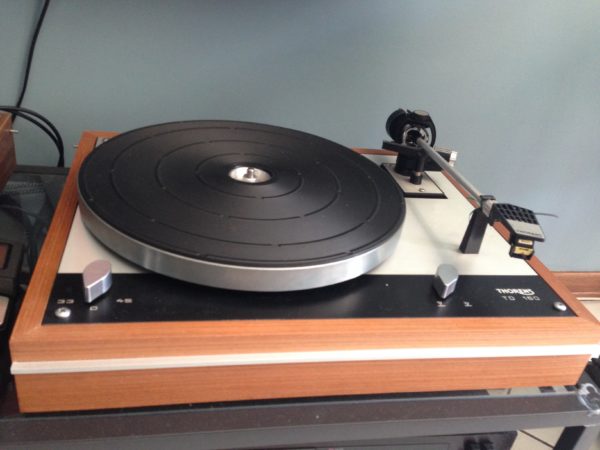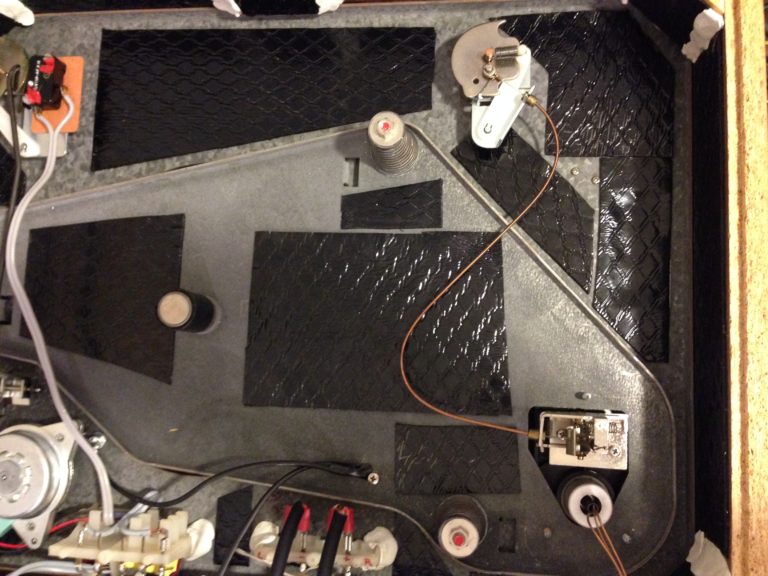I refrain from completely change the old fashioned look of a vintage Thorens original plinth.
 TD-165s, Thorens’ cheaper offer of 1973-4, had poor quality wood covered with vinyl veneer; TD-160s had real wood instead. From a mere technical point of view, both would be improved if mounted in a newly designed wooden (or other material) plinth. But what’s the point of having a vintage turntable if it does not look vintage anymore?
TD-165s, Thorens’ cheaper offer of 1973-4, had poor quality wood covered with vinyl veneer; TD-160s had real wood instead. From a mere technical point of view, both would be improved if mounted in a newly designed wooden (or other material) plinth. But what’s the point of having a vintage turntable if it does not look vintage anymore?
Heavily damaged plinths must be replaced. It is possible to find original vintage plinths in the used market. Eventually it may be considered to have a new plinth built with high quality wood, thicker walls and bigger weight and resistance.
I prefer preserving the original plinth.
Externally, I thoroughly clean the wooden surfaces and apply beeswax and wood-preserving oil.
Vibration-absorbing materials could be used to dampen the inner walls of the plinth so to increase its rigidity. But I prefer to limit the dampening according to the Thorens TD-160 Super modifications that were implemented by Thorens in the 80s. Adhesive bituminous felt sheets can dampen vibrations and noise.
Dampening may be limited to the sub-chassis and bottom motor board.
In this case, the tar sheets have been cut into different shapes and sizes in order to fit the free spaces available: They don’t cover the entire motor plate surface because it would interfere with the vertical bounce of the sub-chassis (the tar sheets would narrow the space between top plate and sub-chassis).
Spot dampening (several shaped pieces versus total covering) is effective as well, as discontinuous patches also prevent vibrations to flow along the wooden or metal surfaces. Some gaps could be filled with a whitish putty normally used in construction industries for waterproofing purpose seams around bathroom and kitchen sinks. It has good dampening properties and preserves its shape and plasticity through time. It is the same visco-elastic material the “white tac” mastic adhesives are made of. I use it around the motor to dampen its vibrations.
I would avoid dampening the counterplatter: it does increase the weight on the suspensions but it’s not easy to distribute the dampening material uniformly in order to avoid unbalances during rotation. Dampening is also be performed under the sub-chassis, trying not to add too much weight on the suspension springs. Dampening the bearing shaft well is also a good idea, since many vibrations occur there as it is the center of rotation.
